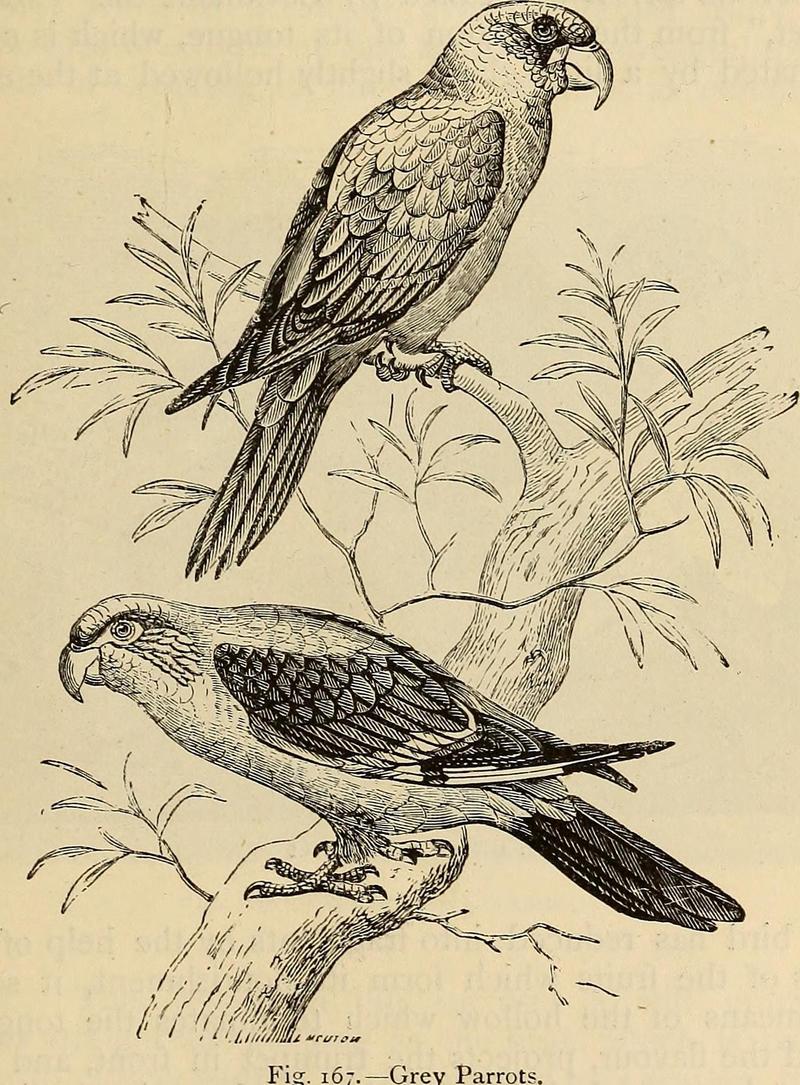|
| Query: bird | Result: 996th of 32675 | |
African grey parrot (Psittacus erithacus)
| Subject: | African grey parrot (Psittacus erithacus)
| | Poster: | Wiki Photos (---@---.---)
| |

| Resolution: 1360x1844
File Size: 431750 Bytes
Upload Date: 2017:04:17 17:30:49
|
Fig.167. Grey Parrots. Grey Parrot or Jaco (Psittacus erythacus). = African grey parrot (Psittacus erithacus).
Title: Reptiles and birds. A popular account of the various orders; with a description of the habits and economy of the most interesting.
Year: 1873 (1870s)
Authors: Louis Figuier, 1819-1894 Parker Gillmore
Subjects: Birds Reptiles
Source book page: https://archive.org/stream/reptilesbirdspo00figu/reptilesbirdspo00figu#page/n454/mode/1up
Source: https://commons.wikimedia.org/wiki/File:Reptiles_and_birds._A_popular_account_of_the_various_orders;_with_a_description_of_the_habits_and_economy_of_the_most_interesting._(1873)_(14563008190).jpg
The African grey parrot (Psittacus erithacus) is an Old World parrot in the family Psittacidae. The African grey parrot is native to equatorial Africa, including Angola, Cameroon, Congo, Côte d'Ivoire, Ghana, Kenya, and Uganda. The African grey parrot is a medium-sized, predominantly grey, black-billed parrot. |
^o^
Animal Pictures Archive for smart phones
^o^
|
|